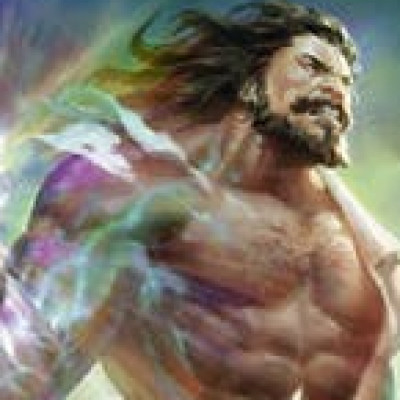If this is your first encounter with the comparison between Flesh and Blood and Fighting Games, we recommend you cycle back to Dylan's first article, Flesh and Blood is a Fighting Game. This is the 5th in a series redefining the way we talk about FAB decks and strategies, following articles on Rushdown fighters, All-Rounders, and Zoners.
In previous installments, I've talked about the Rushdown, All-Rounder, and Zoner archetypes. Each of these brings a unique method by which a player may interact with the game, though they largely all utilize similar damage techniques. In a Fighting Game, damage is dealt via hitting your opponent with various attacks- but there’s a flaw to that system: if your opponent is holding back on their fight pad, damage is “blocked” and, therefore, does not reduce the life total.
Blocking, while almost tautologically simple to understand on its face, is actually one of the major hurdles players will eventually have to overcome to understand the deeper mechanics of the shifting duel between two players. If I know how to block, and my opponent does not, I will win this match. For that matter, if my opponent only kind of knows how to block, and I've spent the time to master blocking, I'm still winning. Blocking is a fundamentally powerful tool in Fighting Games- and because it's fundamental, it’s often forgotten and taken for granted.
That is, until you face a Grappler.
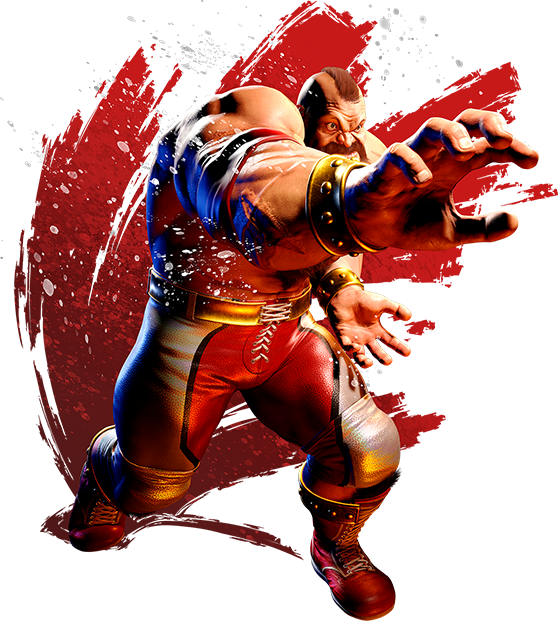
Where Blocking Breaks Down
Grapplers are the peas in the Jell-O, the one crazy wheel on your shopping cart. They're confusing, scary, weird, and bend the entire game around their will. Despite the common consensus that Grapplers are often the weakest characters in any given fighting game, they demand respect - because nothing is more crushing, or more demoralizing, than getting absolutely smashed into the ground by a monster Zangief Screw Piledriver.
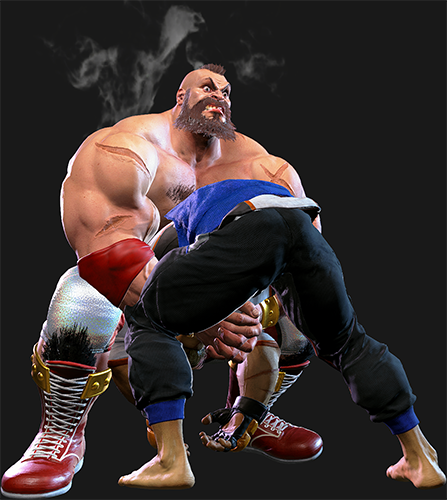
What you’ll notice in the picture above is Zangief, steaming with rage, holding tightly to his opponent’s shoulders. This is because Zangief is about to do damage equal to about 30% of his opponent’s life total. There is no escape, there is no way to block this, no amount of holding back on the controller will save this poor Luke. He will be hurled into the air, and he will be planted like a human tree in the ground.
Grabs are part of the move package of every character in basically every Fighting Game. Grabs are part of a Universal Mechanic system (akin to Generic cards). And that's important, because grabs complete the triangle of Rock, Paper, Scissors in a fighting game. If I throw rock (attack), and you throw paper (block), paper wins. If I throw rock, and you throw Scissors (Grab), I will win (well, if my attack lands before your grab... the analogy only gets me so far). But if I throw Scissors (Grab) and you throw Paper (Block), I win, because Grabs beat Blocks.
Grabs do have some innate downsides. For one, Grapplers are hard countered by Zoners. This is because Zoners are excellent at keeping Grapplers away from them. Think of it like Rock (Attack), Paper (Block), Scissors (Grab) again, but imagine that Rock is actually 12 feet long. No matter how good scissors is, it cannot beat a 12 foot long rock. Grapplers need to get in close and execute a grab, which Zoners simply don't allow them to do.
Working Outside Their Comfort Zone
How does a Grappler, then, deal with a Zoner, it's perfect counter? They usually have a higher health pool, for one, and also tend to have some mechanic available to them which allows them to bait their opponent into one mode of thinking, while aiming for another goal entirely. From Guilty Gear Strive, let me present to you, Potemkin's Mega Fist.
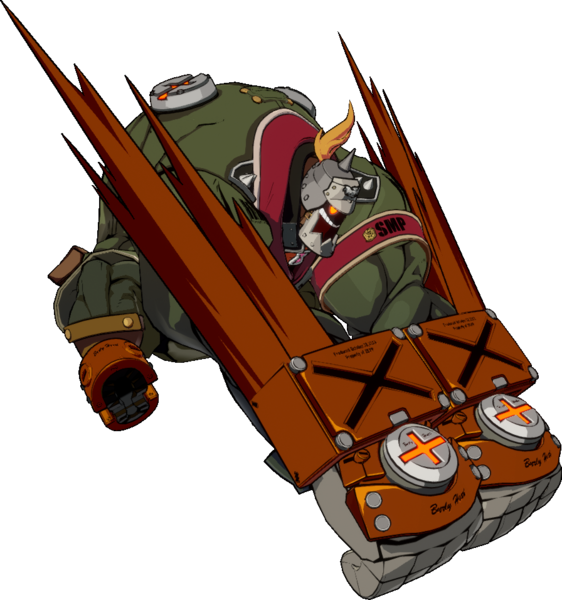
This move launches Potemkin into the air (with forward momentum) and turns everything brown into a damaging hit box. While this is not a grab, it is an excellent approach tool for Potemkin to use and abuse against his opponents, because he has a massive health pool, so it’s okay for him to be wrong more than he’s right.
It’s hard to express how important that last point is without booting up a game and showing you, but to be concise, back in the Rushdown article, we covered Chipp Zanuff, a Rushdown character also from Guilty Gear Strive. Chipp’s health pool is absurdly low, and he makes up for this with his incredible speed. Chipp, though, only gets to be wrong once in a typical match vs Potemkin, who can be wrong up to 5 times (this is not an exact science, of course, just speaking from experience).
Back to Mega Fist and how ridiculous it is. When Potemkin lands this ability, he is immediately within grab range in most circumstances. So if you were hit by Mega Fist, you better hope that Potemkin is having an off day; otherwise you are very likely to be grabbed, which will deal, in some circumstances, upwards of 50% of your life total!
If you block this move, you are still in grab range, by the way - and remember, grabs cannot be blocked, so you better hope that Potemkin is feeling nice that day.
If it seems like I'm making Grapplers out to be the best characters in Fighting Games, the truth is that they're not. Every archetype has its strengths and weaknesses. Most often, Grapplers are very slow characters. Their abilities take much longer in the Startup animation (the animation before the damaging one), they usually have bad jumps, and often have very few ways to extend combos for maximizing damage. Grapplers are often limited in skillset, and are supposed to instead utilize their oppressive abilities to force their opponents into a nightmarish guessing game of “Is the grappler going to grab me, or punch me?”
A high-level player will often know how to avoid scenarios like this, rather than simply trying to overpower the Grappler. It's usually best to dance around them with superior speed, rather than engage them directly in blow-by-blow battle. Part of the reason why is because grabs have some of the longest recovery frames in all of Fighting Games. Recovery frames, for the uninitiated, are the frames a character needs to go through to return to their idle animation. Each attack in a Fighting Game has the Startup, Active, and Recovery animations. So while Rushdown characters tend to have many different attacks with fast Startup, Active, and Recovery animations, Grapplers have the opposite. They are very slow animations. If a Potemkin, or Zangief, or any grappler whiffs and misses their grab? They will absolutely be punished brutally for their mistake.
The Core Grappler Gameplay
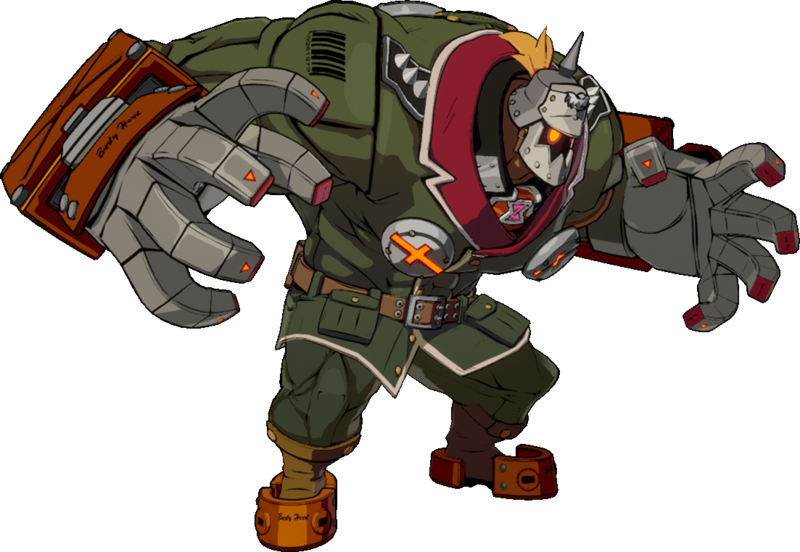
The core elements of Grapplers are:
They act as the third corner of rock, paper, and scissors.
They have evasive damage in the form of grabs that get around blocking.
They require setup.
Grapplers represent the third mode of interactivity in a fighting game. They have evasive damage because their third mode cannot be interacted with by normal “defensive” abilities. And they require setup, because grabs can only be executed at extremely short distances, take time to execute, and are incredibly susceptible to being punished.
Grapplers in Flesh and Blood
When I think Grappler in FaB, my mind goes straight to Bravo. The dominate keyword is a perfect example of an evasive damage ability. It is, alongside its strange cousins arcane and non-specific damage, the only form of damage which can be simply unblockable. If Bravo has the right hand for it, and you don’t happen to have an out waiting in your arsenal, it’s simply inevitable for Bravo to activate his hero ability and force a KO with a dominated Crippling Crush.

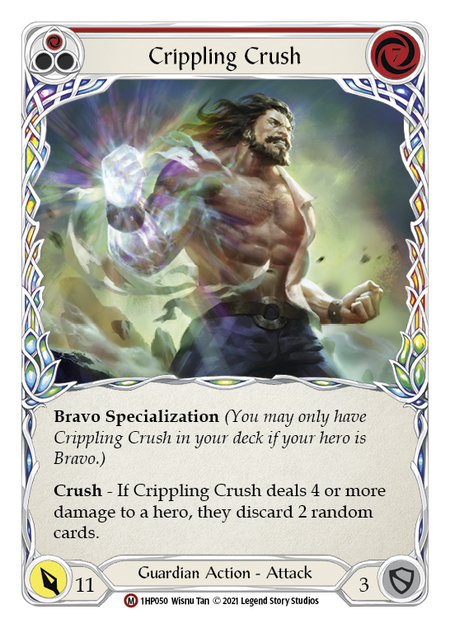
But really, evasive damage as a concept can be pretty universally applied to all heroes in some capacity, just as all Fighting Game characters have grabs. Fai has his chain links that go too far for any reasonable FaB player to block. A player can only prevent as much arcane damage as their equipment allows. And just about anyone can run Nimblism + Overload - but that doesn’t mean they excel at it like Bravo. Bravo has evasive damage for days, if he wants it.

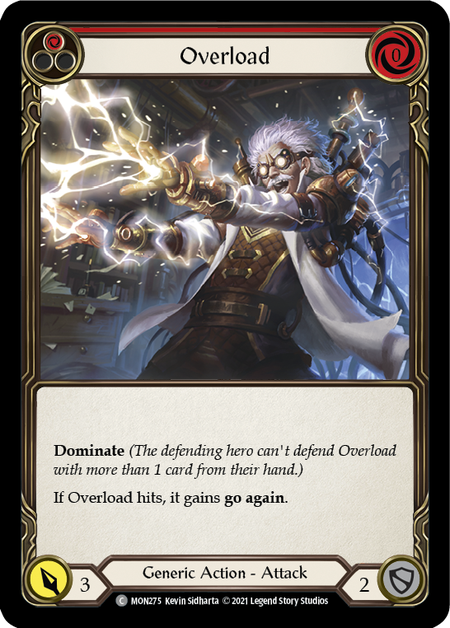
Not only that, but Bravo puts his opponents in a constant state of “damned if you do, damned if you don’t,” the same way that Grapplers do. Crippling Crush evokes the same feelings in me that a particularly feisty Zangief does - that being, “Oh no, please, don’t come in any closer! I just want to play with you!”
But Bravo does have his drawbacks, as we all know. An adept player can spot a Bravo setting up from a mile away based on their blocks. “Hmm, maybe I won’t pitch this Sink Below after all,” we say to ourselves as Bravo takes yet another punch to the head. Not only that, but even Bravo needing to activate his hero in order to get the dominate is a setup effect. Once he does so, we know what’s coming, and it’s time to start planning our turn accordingly.
But Bravo isn’t the only Grappler in Flesh and Blood. After testing and pondering about the heroes, I have landed on the following as my list. Each of these heroes shares the commonality of pulling a great deal of value out of evasive damage.
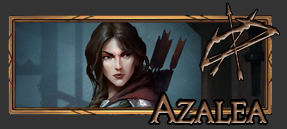
In the case of Azalea, she can set up scenarios of 14-damage attacks - with dominate - that threaten literally turn-ending effects. If Azalea gets a tad lucky, she can do that again the next turn.
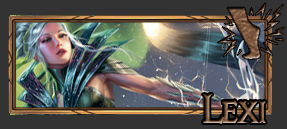
Before Outsiders, Lexi was largely played in this similar “damned if you do, damned if you don’t" style, though I still feel more comfortable putting Ice Lexi in the Zoner category than Grappler. Her current iteration is obviously full Rushdown (with the blocking capabilities of an All-Rounder).
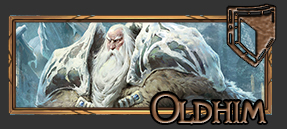
Oldhim was - or I suppose, in Living Legend format, will soon be once again - very much like Bravo, though he used different techniques to make his attacks effectively unblockable. Things like fusing Oaken Olds, or running you so low on cards you were forced to take the damage instead of giving up your precious few deck pieces.

I'm going to own it: I was wrong about Rhinar in my original video. At the time, my experiences with Rhinar emphasized a “Block 2, Play 2” strategy while waiting for his Bloodrush Bellow turns. At the time, that was a signifier that he could be categorized as an All-Rounder.
Since then, I have come to understand much better how Rhinar navigates a match. Intimidate is 100% an evasive damage mechanic, and he requires setup to put his opponents in what Fighting Game players like to call “the blender.” It’s a special term where a Fighting Game player gains so much pressure and advantage from an interaction that the defender is left scrambling simply to return the game to neutral. A Bloodrush Bellow at a critical moment feels exactly like being put into a Fighting Game blender. And so, for the first time in this series and the video it’s born from, I must admit that I was wrong about something!
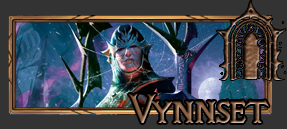
Finally, the newcomer on the block, Vynnset. It took me a long time to figure out how I wanted to categorize Vynnset. While the jury is still mostly out on her optimal build, the deck lists which have seemed to garner the most success (and feel the most correct to play) tend to operate on the same win-conditions as her Grappler, Guardian, Ranger, and Brute counterparts: spend extra time defending, setting up, and then unleash an onslaught of horrific, evasive damage once the setup is complete. Her blenders are not nearly as long-lasting as Rhinar’s can be, but they can be devastating when things break her way.
Wrapping Up
It may have come across that I do not like Grapplers, and that's true! I do not like playing against Grapplers. How they make me feel in a match is, for lack of a worse word, “hopeless.”
That, however, does not mean that I think they should not exist. Grapplers are an integral part to how a game and a meta within that game can self-regulate. Grapplers are the checks to the meta's balances. They are brick walls that demand that their opponents pay attention and learn, because if you cannot figure out how to break through a Grappler's tough exterior, you will not be able to put them on the backfoot.
And with that comes the end of the archetypes section for Flesh and Blood is a Fighting Game. It’s bittersweet for me. I have loved writing these so much, and am so proud that I get to have them etched in the history of Flesh and Blood forever. But I am sad to see them finished, because it means I will not be able to expand them anytime soon, at least until we see a significant churn in hero availability.
However! That does not mean this article series is over. Next, I'm going to take everything we've talked about so far and bring it together with the benefit of hindsight for a massive “takeaways” article. We'll talk how to examine heroes, understand metas, and improve through the lens of Fighting Games. And we'll touch on a few unique and juicy tidbits for my upcoming FaB is a Fighting Game Pt 2 video.
Until then!



